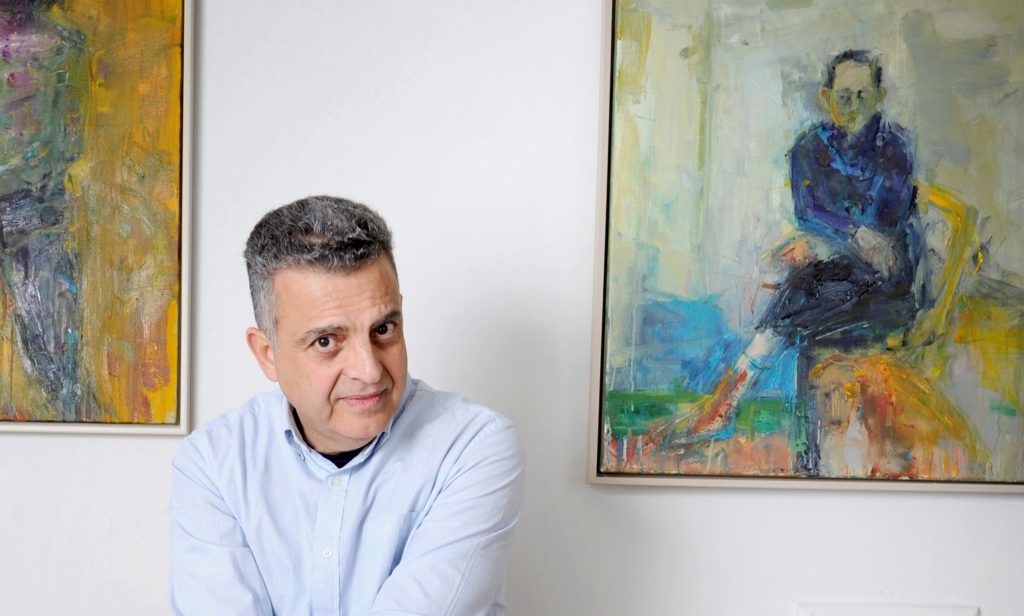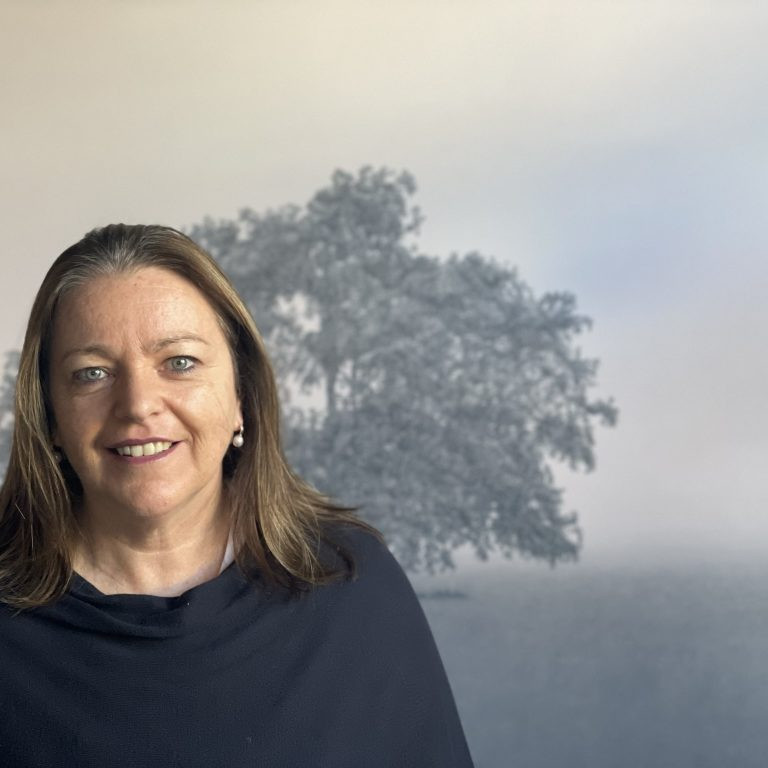Henry Jabbour Painter - Cambridge, UK
You trained initially as a biologist and worked as a scientist, has this part of your past influenced your current art practice of painting people?
I am sure it has but sometimes it is very difficult to pinpoint how.
I firmly believe that the way I look at, and my empathy towards, the human figure is hugely influenced and informed by my past experiences (being brought up in Lebanon at the time of the civil war) and my subsequent education.
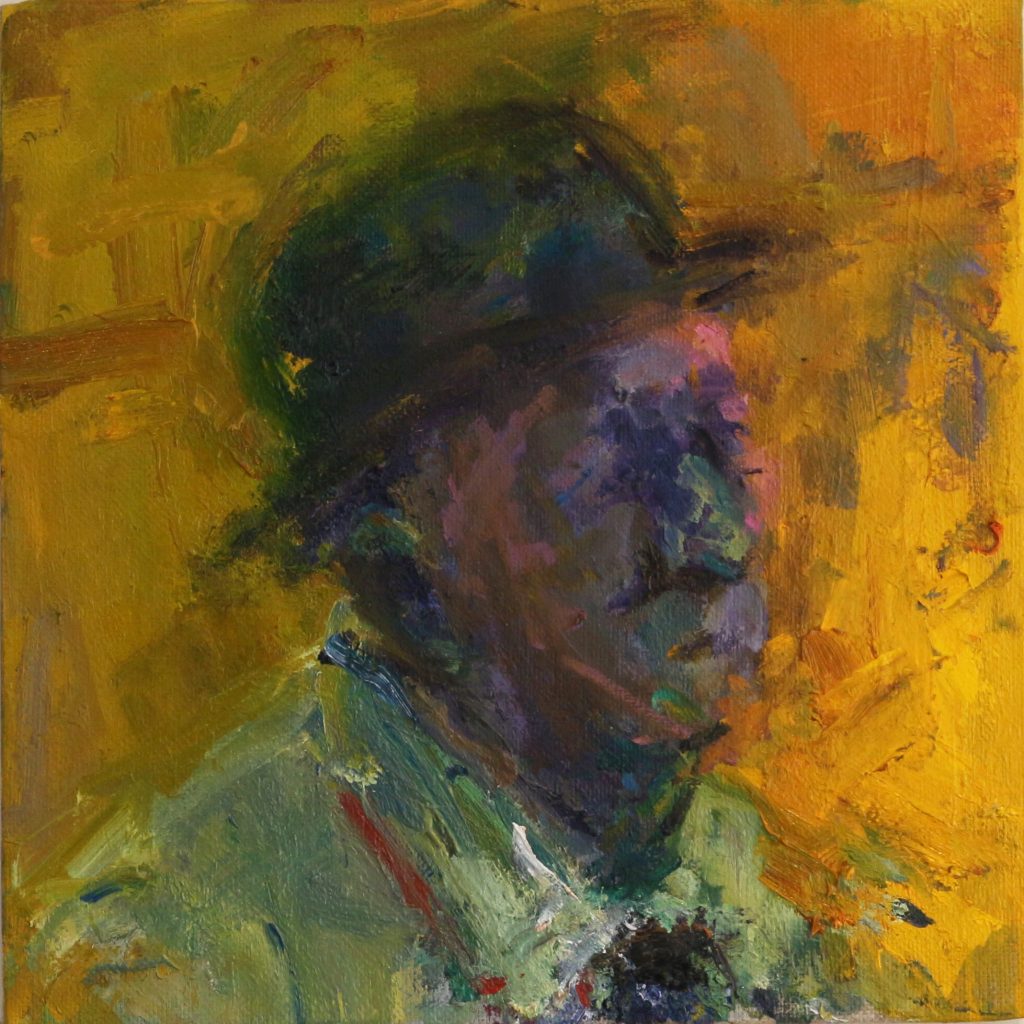
College Porter 2, Oil on Linen, 33 x33 cm
I think my training as a biologist and the skills that I have had to develop to be creative in my research have certainly served me well as I made the transition into the arts. I believe that the criteria for being creative in any discipline are fundamentally similar; perseverance, hard work, rigour, acute observation and the continuous updating of technical skills.
You state, ‘Each piece is a search beyond mere appearance’ expand on this statement.
I would say that as my practice developed I have become aware that may work is a constant struggle to subvert the specific in search for the universal. By that I mean, I am not looking to represent specific people but rather universal being. I want the viewer to be able to identify with my paintings at a personal level and to connect with them emotionally. I want my work to have a visual presence that is independent of me so that the viewer can continue the creative journey that I have initiated, with their own thoughts and emotions.
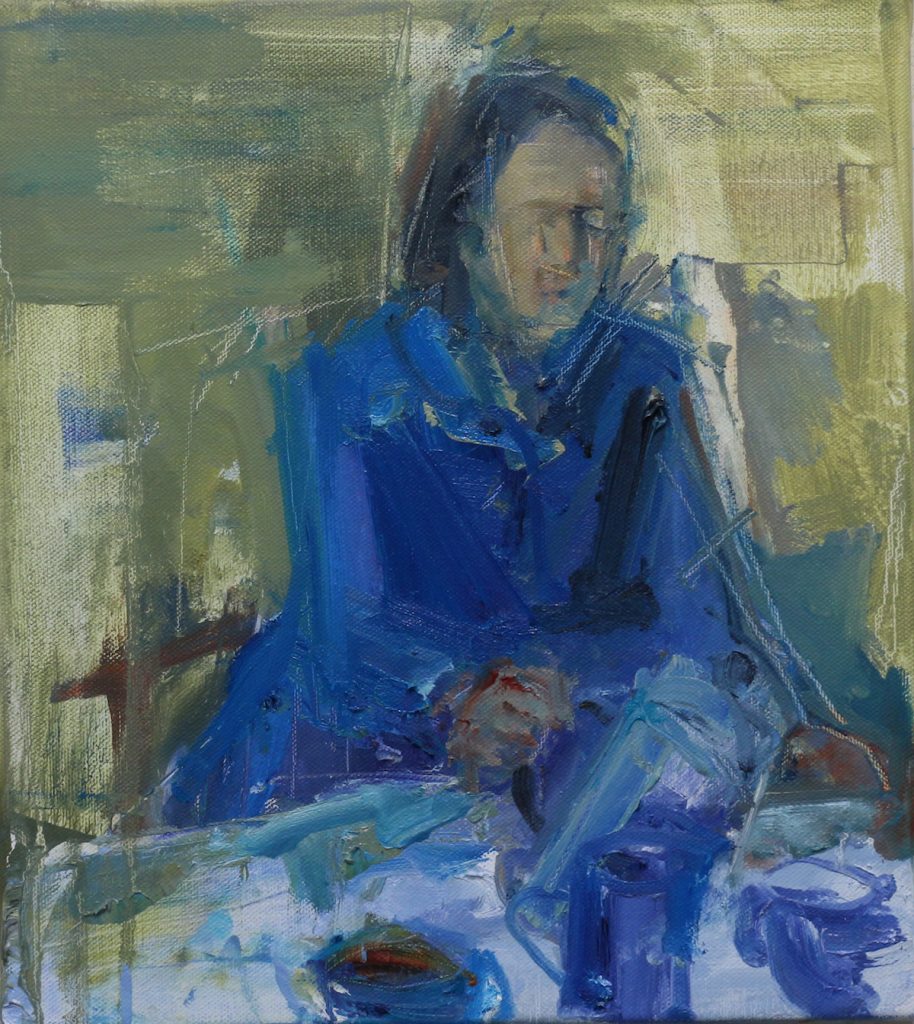
Morning Ritual 3, Oil on Linen, 40 x 45 cm
You were born and educated in Lebanon, Sydney and New York, and worked in many countries/cities including New Zealand, London, Paris and Edinburgh. Has this travel given you a deeper insight into the ‘sense of common and shared humanity’?
Absolutely – observing and connecting with people from different backgrounds and walks of life taught me how much we share in common. It also taught me the importance of friendship – my friends in many of those places became my family.
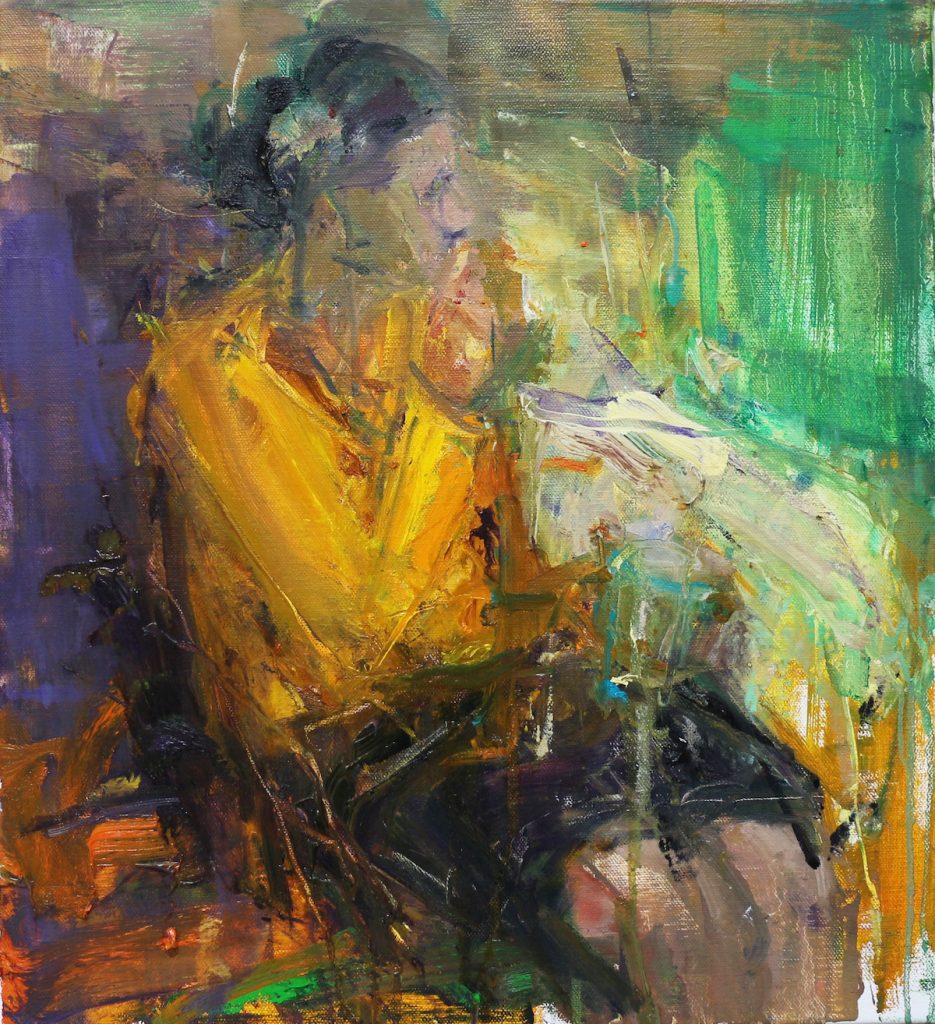
Woman in Yellow Top Holding Cup, Oil on Linen, 55 x 60 cm
What we value as individuals at a very basic level is very much in common irrespective of our background– we all want affection and love in our lives, security for ourselves, and those we care about. I also became aware of how important it is to experience different cultures, traditions and different and ways of living. It really enriched my life and my outlook on life.
In your oils do you do them as commissions or do you find interesting people and ask them to sit?
Most of the people in my paintings are people I know – friends or people who I meet that somehow I find emotive in the way they carry themselves. I work from observation but also from memory and imagination.
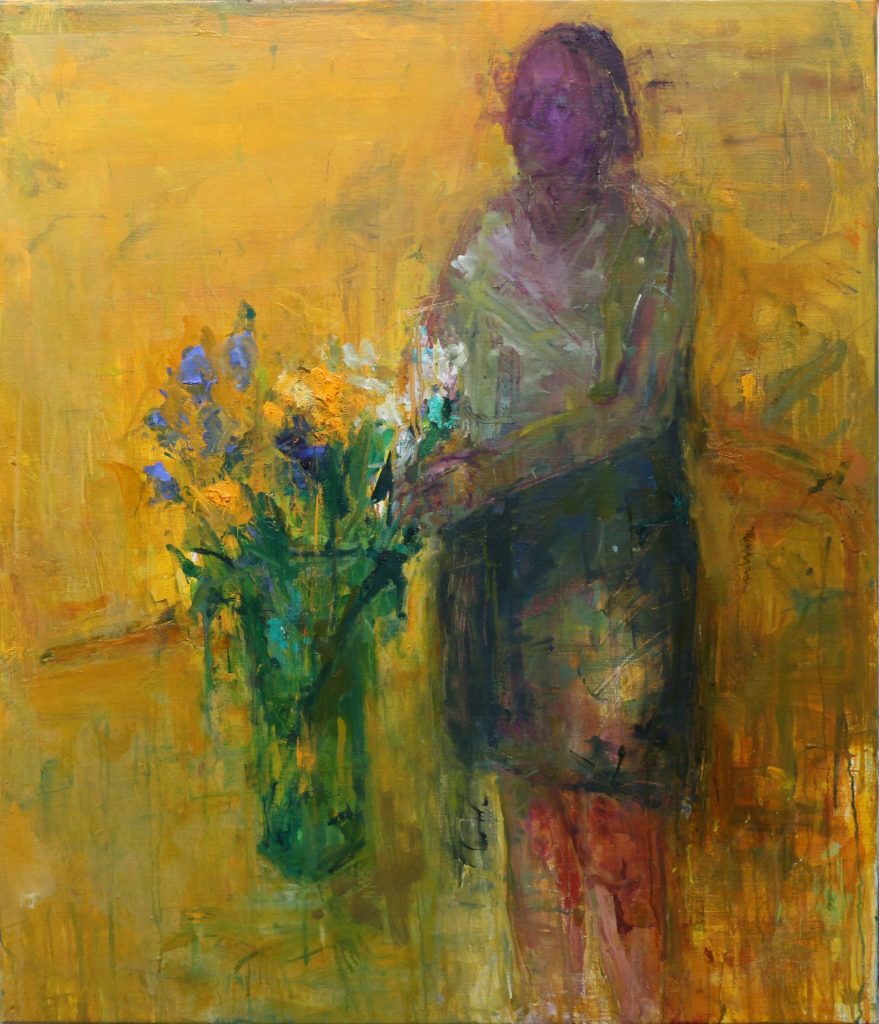
Woman with Flowers, Oil on Linen, 90 x 105 cms
I paint the same people over and over again at times – and by the end I am really relying on my memory of that person or their gesture. I need to be connected with the person I am painting otherwise I lose interest very quickly.
Your work, ‘Seated Man with Dog’ discuss the way the dog has become a very secondary presence in the whole piece.
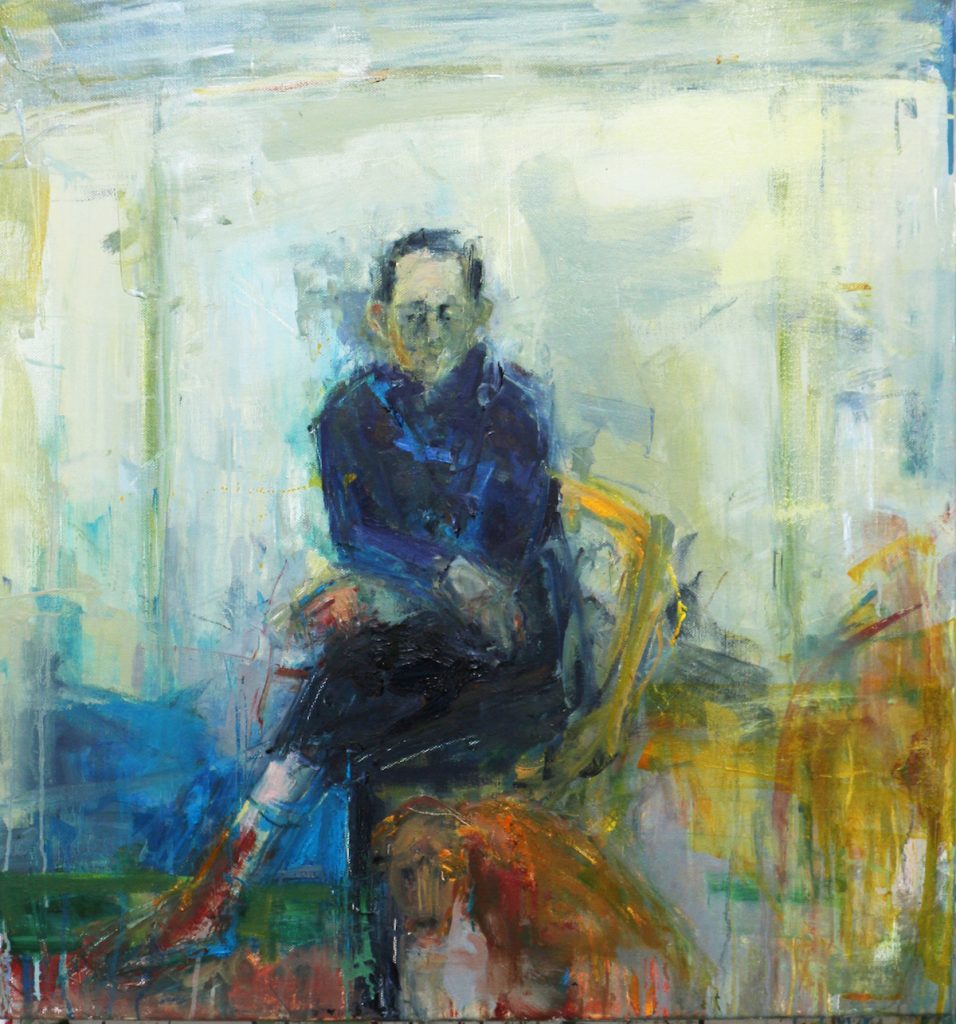
Man Seated with Dog, Oil on Linen, 76 x 82 cm
That is a very interesting question. I was having work done in my garden and getting a studio built and one of the people who was doing the work used to come with his dog. I was very intrigued about his relationship with his dog that was very connected and dependent on him. Then I acquired a puppy and so the inclusion of the dog felt like a natural step. I wanted the dog to have a presence and connection with the viewer in that painting – It was like a present for the viewer. What is important here? The relationship of the dog with the seated man, or the relationship of the dog with the viewer?

Artist Henry Jabbour at his Union Gallery exhibition of paintings, Edinburgh. Pictured with Dennis the gallery mascot, and Henry’s paintings including “Seated Man With Dog” (top right). Photograph by Colin Hattersley
Explain your paintings of choir boys.
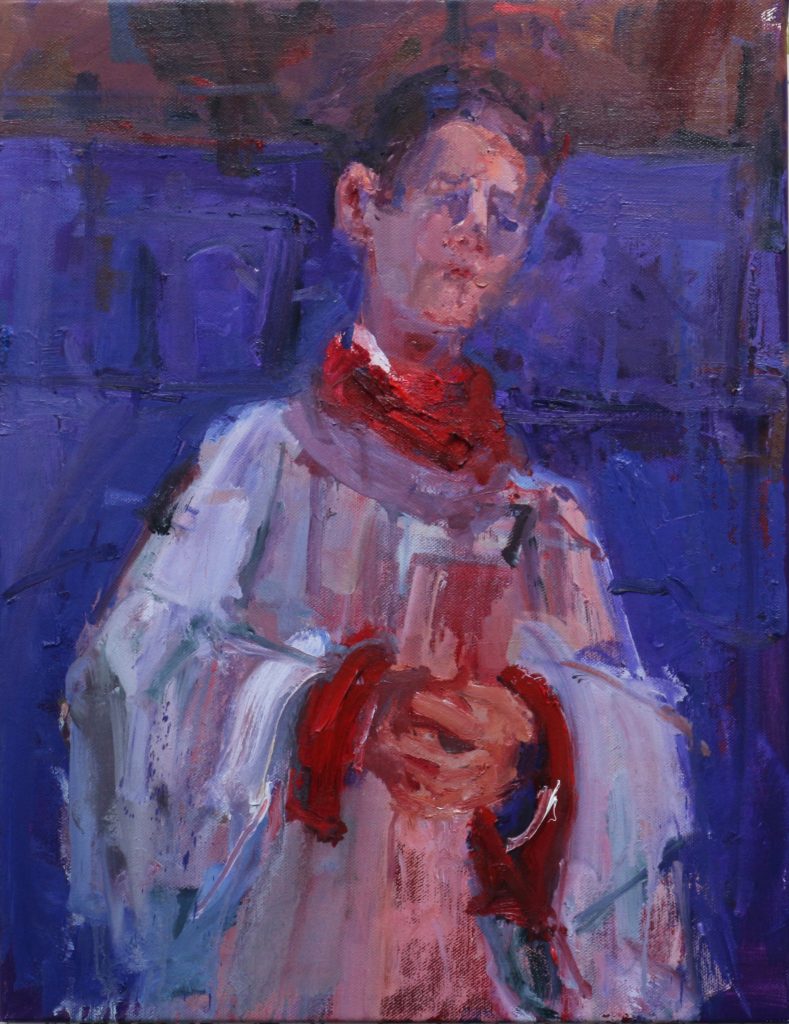
Choir Boy 1 Homage to Soutine, Oil on Linen, 50 x 65 cm
Soutine is one painter whose work I admire hugely. I love his subject matter and am in awe of the way he applies paint. Also, I always loved his paintings of choirboys. I moved to Cambridge about a year and half ago and choirs are a big thing in many Cambridge schools and Colleges so I thought this is an opportunity to reference these works of Soutine.
A friend of mine works at a Choir School in Cambridge so she arranged for me to meet with the father of the boy in my choirboy paintings. Of course with his consent I was able to do the paintings. I added Homage to Soutine to the title because my paintings were a direct reference to Soutine and hugely influenced by his work.
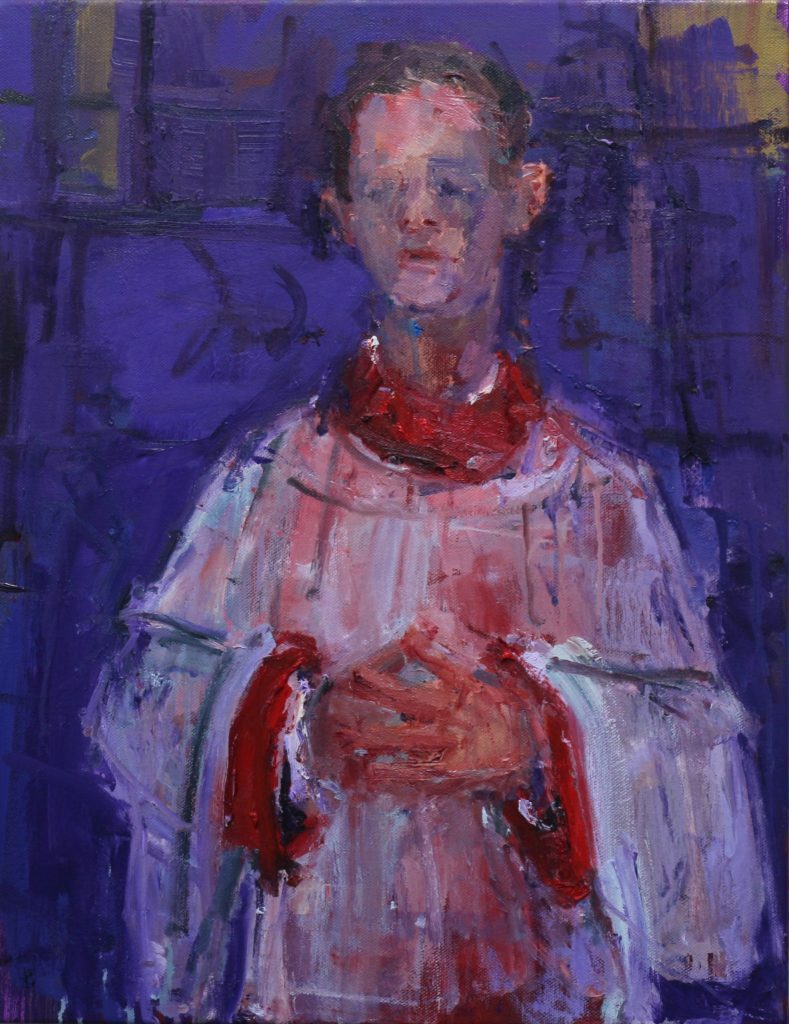
Choir Boy 2 Homage to Soutine, Oil on Linen, 50 x 65 cm
Many artists find hands very difficult to draw and paint. Expand on your painting of hands.
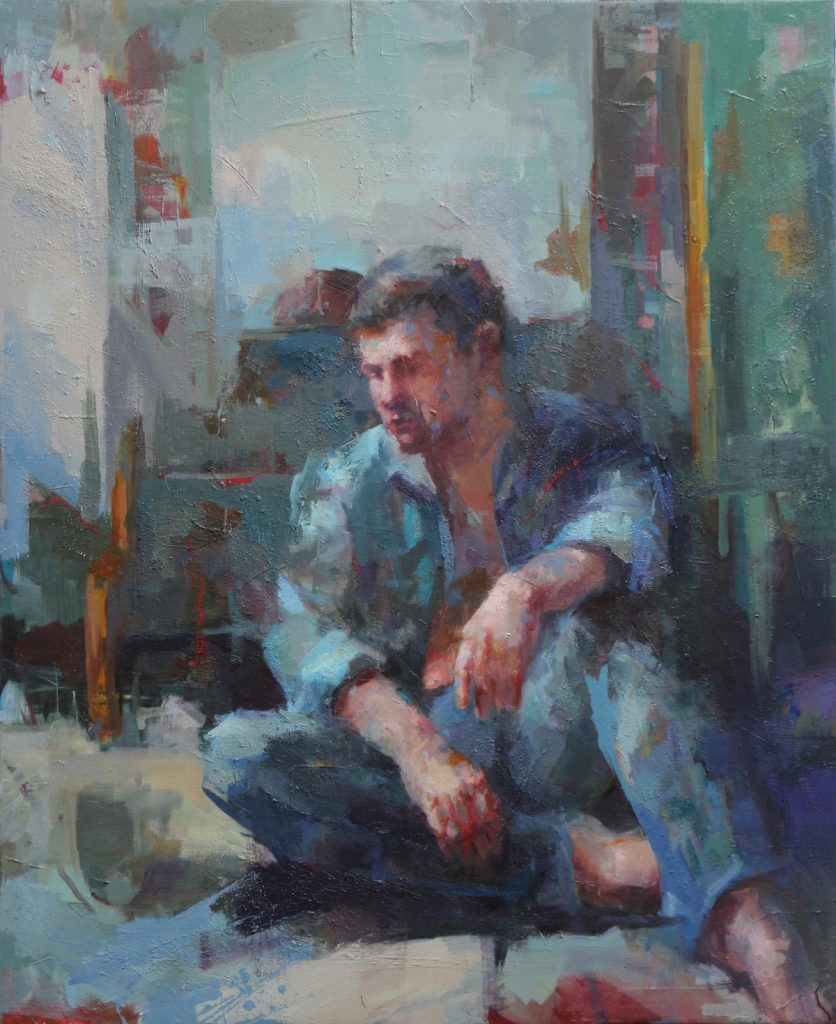
In and Out of the Past, Oil on Linen, 110 x 90 cm
I used to find hands very difficult to paint and then one day something clicked. I studied the anatomy of hands- both bone and muscle and that helped a lot. But I think the breakthrough came when I stopped thinking of them as hands but was looking at shapes. I am no longer interested in drawing or painting hands with anatomical accuracy but am rather looking at the position and the weight of the hands in relation to the rest of the body.
Hands are very emotive and intimate and can tell you a lot about the mood of the person, their emotional state – whether vulnerable, fearful, joyful etc… In some of my work I was interested in the hands as a tool such as in the Peeling paintings or Morning Ritual paintings.
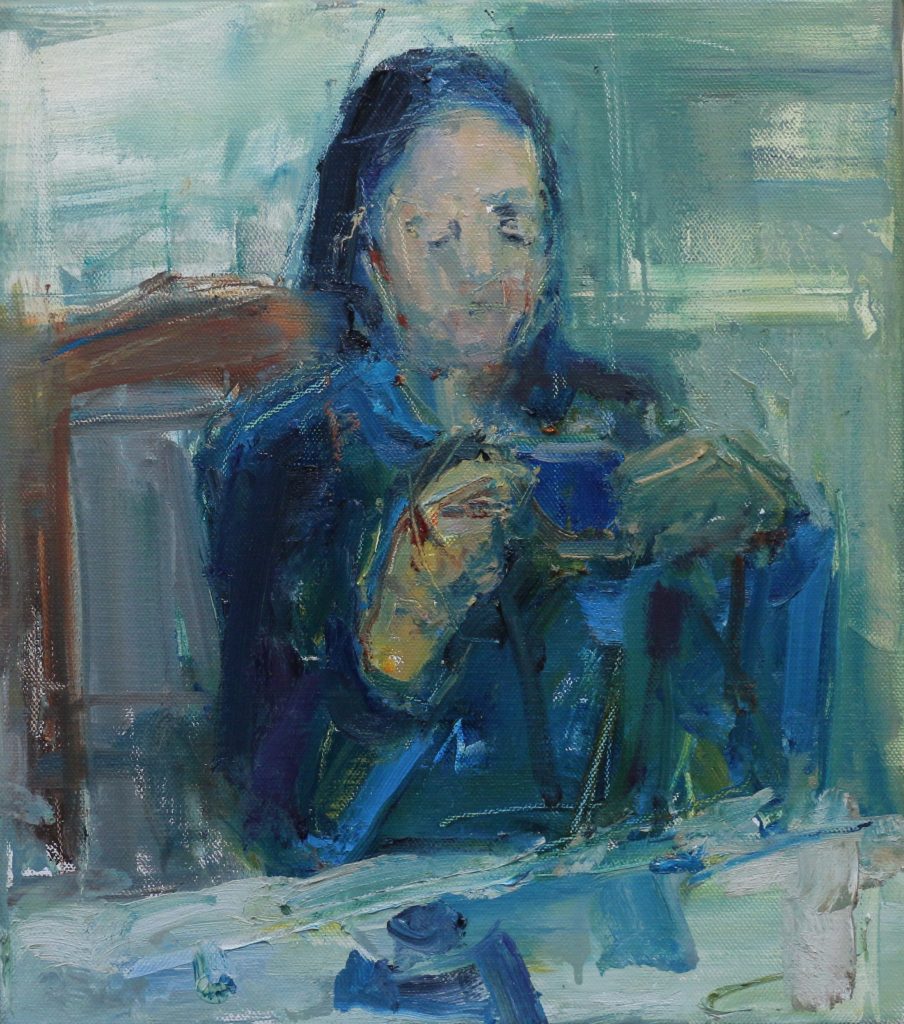
Morning Ritual 1, Oil on Linen, 40 x 45 cm
Explain the importance of colour in you oils.
I am fascinated by colour and its power and influence on our imagination. Most of the time my use of colour is very intuitive and I always try to surprise myself to find ways in which colours can interact.
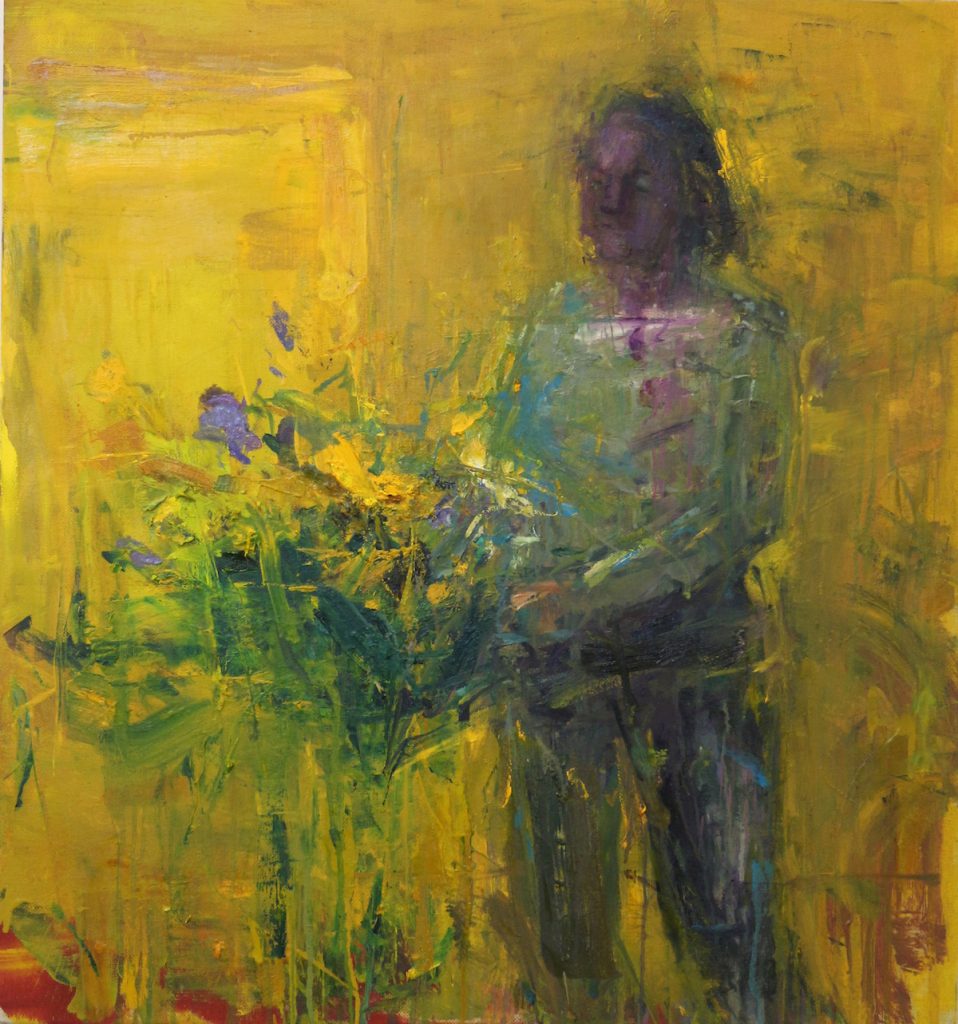
Yellow Flowers, Oil on Linen, 76 x 82 cm
In my latest work, Yellow Flowers for example, I have started to limit my palette and explore how I can still depict form, mood and vibrancy. A lot of the time I work with oil paint wet on wet so that colours can mix and create new colours on the canvas. That excites me– both in terms of the sumptuousness of oil paint but also of what one colour can do to another colour when it is not pre-mixed or pre-meditated. I get excited by the element of the accidental and the unplanned in my work.
With an impressionistic, abstract method you are still able to capture the individual discuss.
I think it is because my work is still deeply rooted in observation. I paint, I draw and I make prints and all of these mediums are an important part of my practice. It is also important for me to be switching between these practices concurrently. I feel they influence each other in a very positive way.
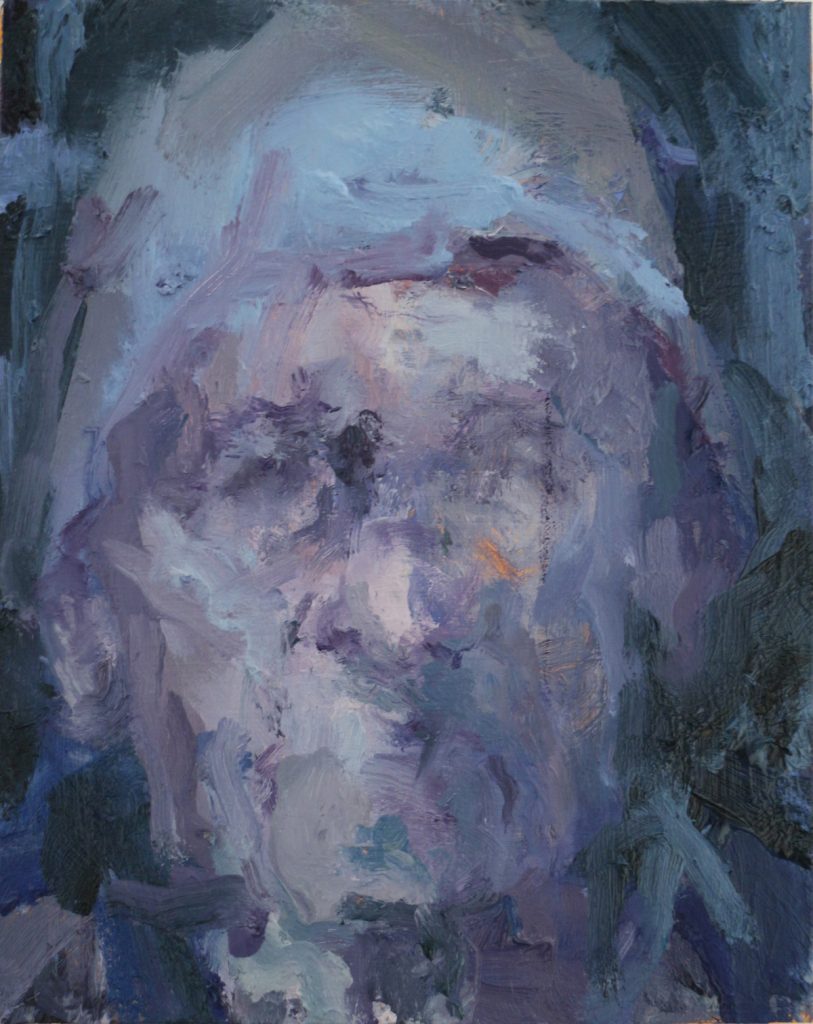
Old Man with a Hat, Oil on Board, 26 x 21 cm
The individuals in my work are universal or at least that is the way I like to view them. Then the viewer can individualise them. The viewer can personalise them into something or someone that fits into their lives or imagination.
One of your first awards was the Eliza Clifford Prize.
That was a very rewarding award to receive because it was at the beginning of my art journey. We embark on our journeys not thinking about or chasing rewards like these but when they do happen they are pleasant and exciting. It was like a kind of acceptance of my work and efforts at the school where I was studying. It was an affirmation to keep going.
Eliza Clifford came into painting at the Leith School of Art as a mature student but sadly her life was cut short by illness. Her husband and the school set up this award in her memory.
You made a huge step to leave the scientific world and become a full time artist. What was the catalyst?
The organisation that I was working for lost its funding so it was closing down but then the University of Edinburgh offered me a professorship to continue with my work. At the time, I had been painting for several years, in the evenings and weekends and feeling more and more frustrated of not having more time to paint. I became aware that my passion for art was outgrowing my passion for science. But still it was a very big step to give up my career and step into the unknown. It took me several months to make the decision but in the end I knew I had to do it. I knew that in years to come I would regret not having had the courage to follow my passion for art. Once I made the decision, I felt a huge sense of relief and never looked back. My life is very full and I am happy it is led by creative pursuits.
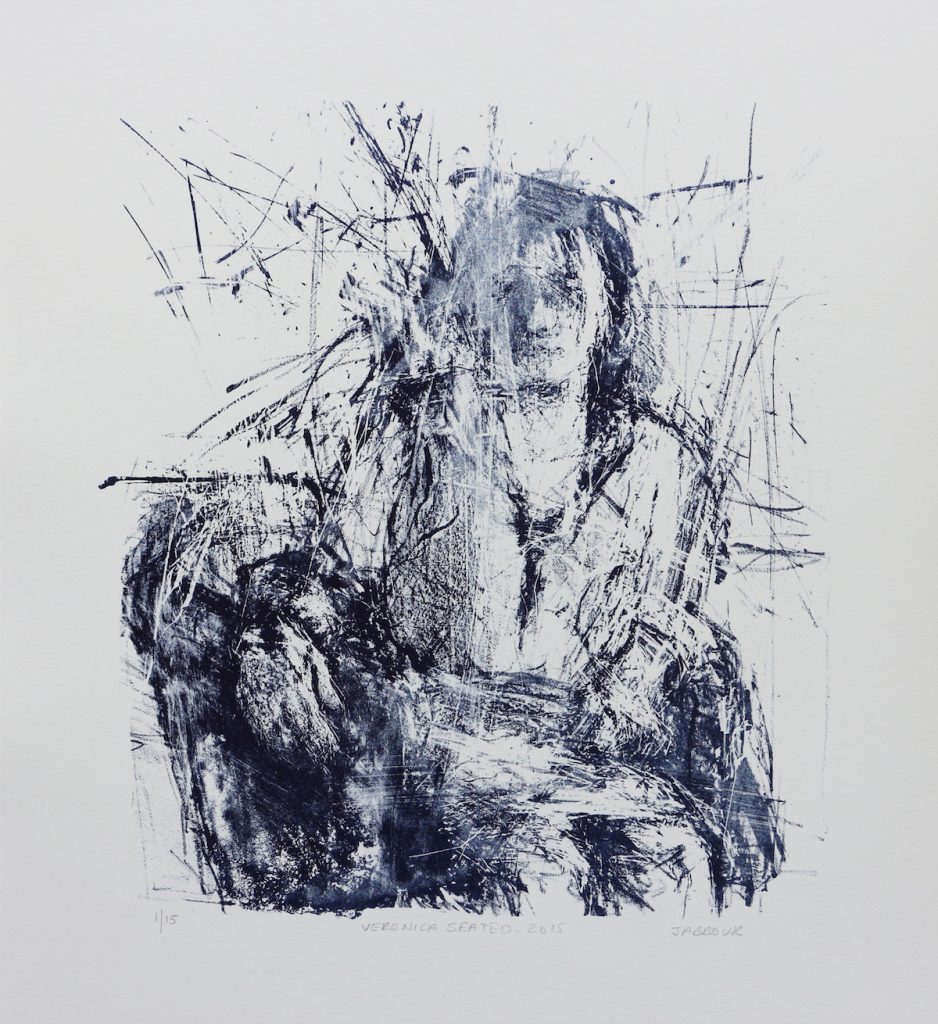
Veronica Seated, Lithograph
How important is it to follow a dream and what pre-planning would you give to others planning on a career change to the arts?
I think this has to be a very personal decision depending on personal circumstances. For me it was very important. At the time when I was still not sure of whether to follow my dream or not, I remember reading this quote about commitment by Goethe.
“Until one is committed, there is hesitancy, the chance to draw back– Concerning all acts of initiative (and creation), there is one elementary truth that ignorance of which kills countless ideas and splendid plans: that the moment one definitely commits oneself, then Providence moves too. All sorts of things occur to help one that would never otherwise have occurred. A whole stream of events issues from the decision, raising in one’s favor all manner of unforeseen incidents and meetings and material assistance, which no man could have dreamed would have come his way.
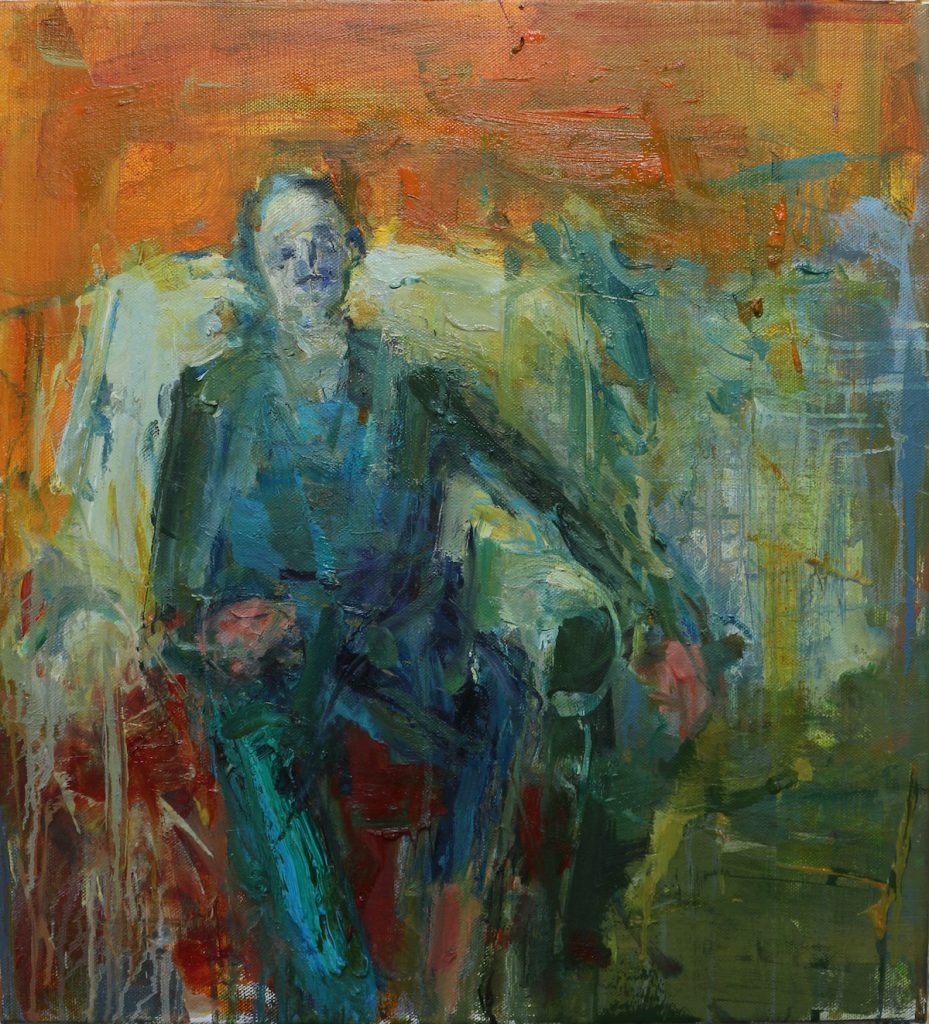
Seated Man – Orange Wall, Oil on Linen, 55 x 60 cm
Whatever you can do, or dream you can do, begin it. Boldness has genius, power, and magic in it. Begin it now.”
That really was a catalyst in a way. And I find what Goethe says so very true. Boldness does have power and magic in it.
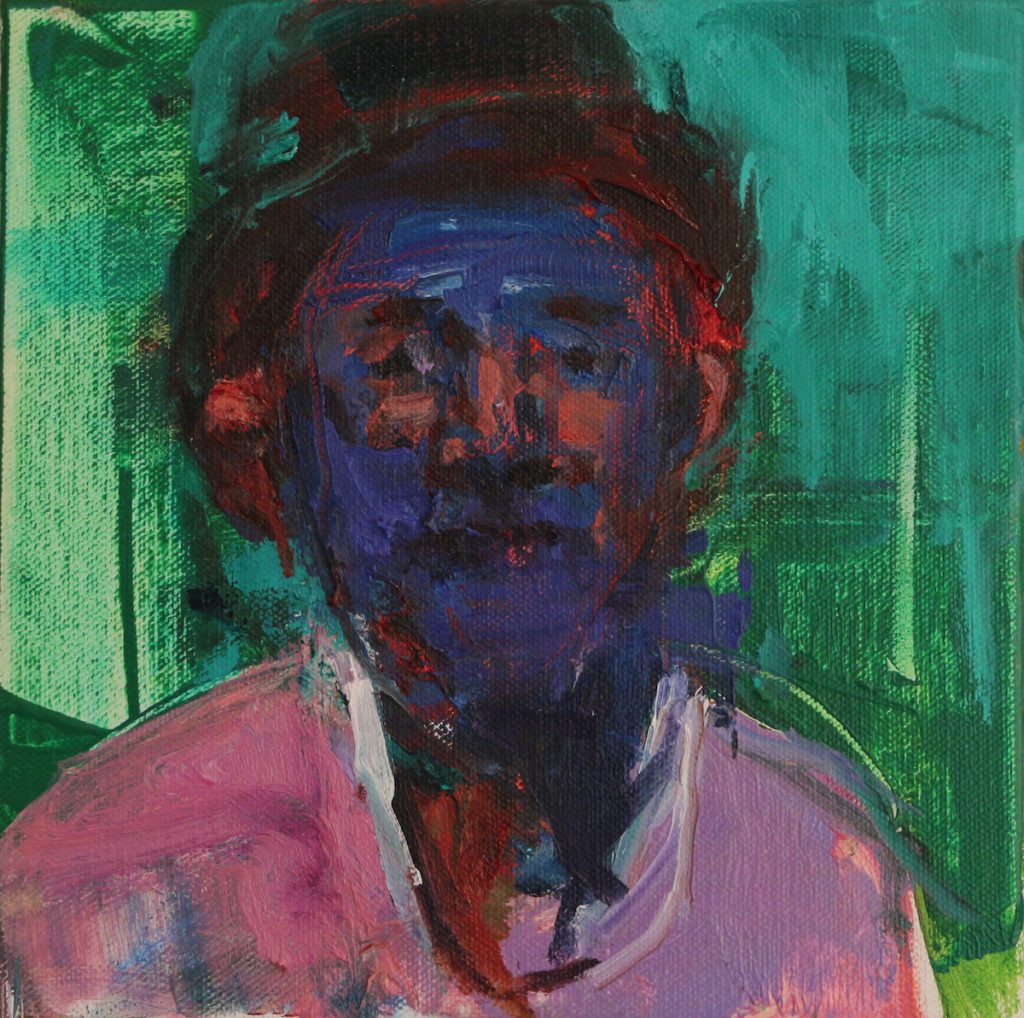
College Porter, Oil on Linen, 30 x 30 cm
Contact details
Henry Jabbour
www.henryjabbour.com
henryjabbour@gmail.com
Henry Jabbour, Cambridge, UK
Interview by Deborah Blakeley, March, 2017
Think a colleague or friend could benefit from this interview?
Knowledge is one of the biggest assets in any business. So why not forward this on to your friends and colleagues so they too can start taking advantage of the insightful information the artist has given?
Other artists you may be interested in:


